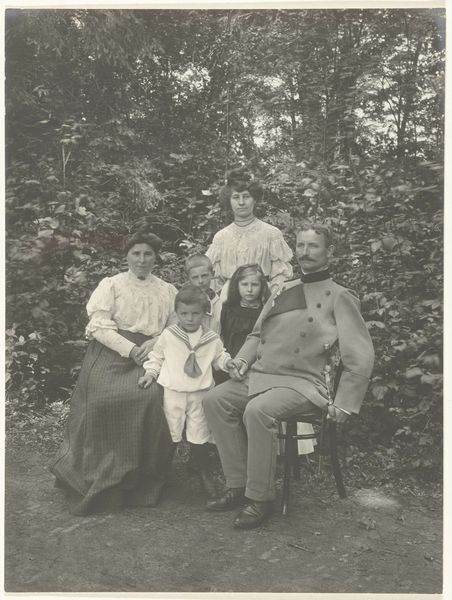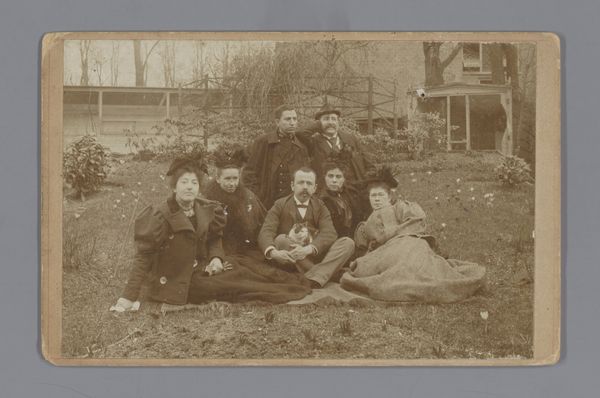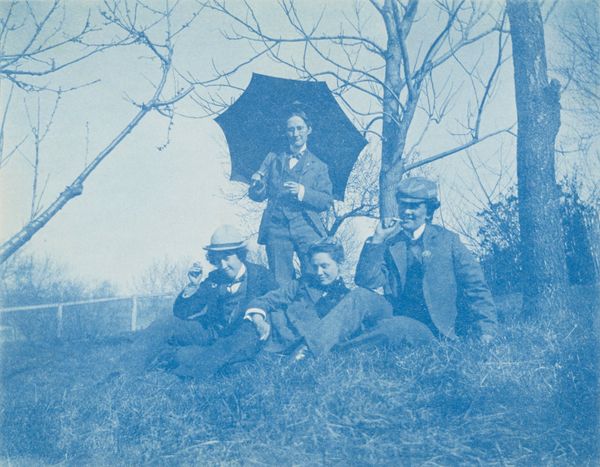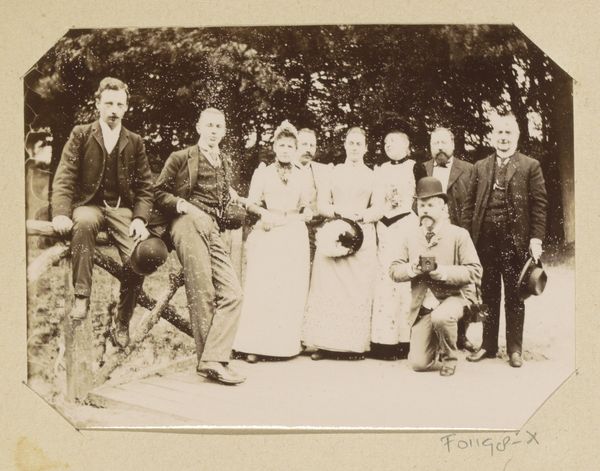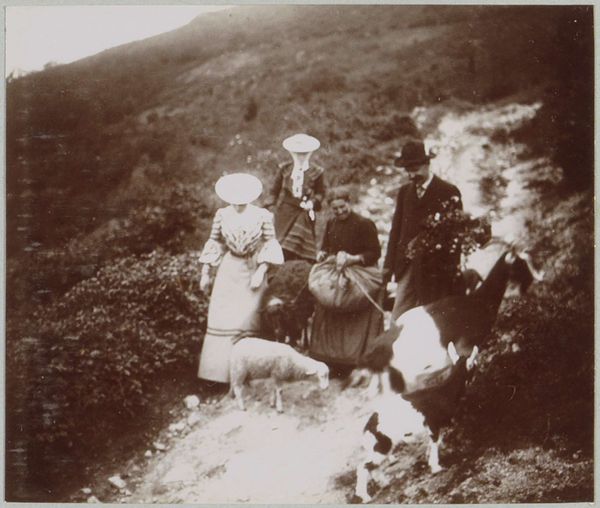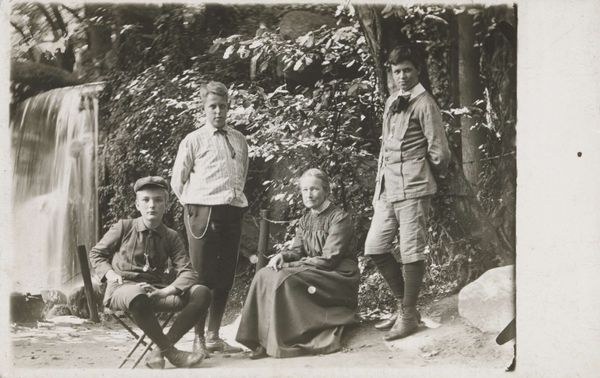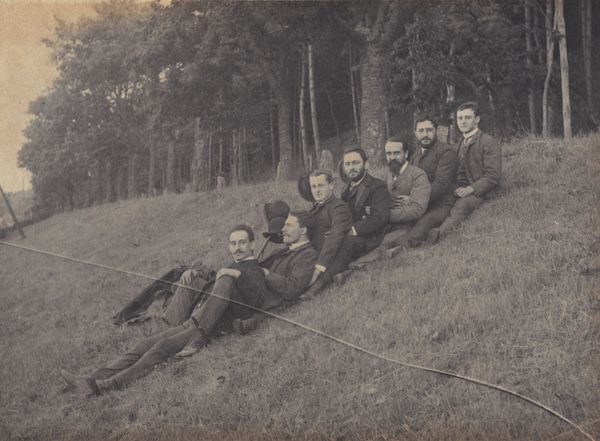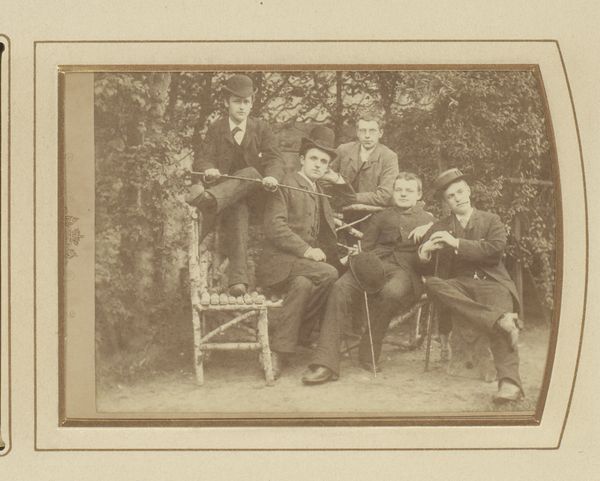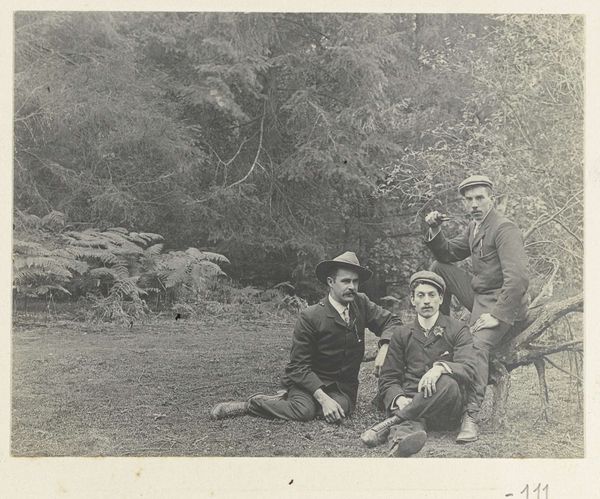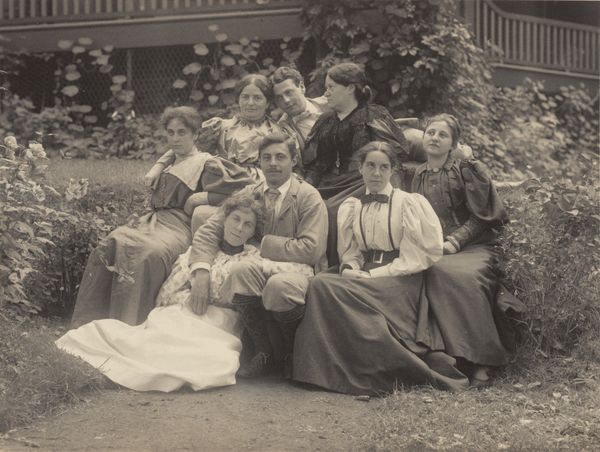
photography, gelatin-silver-print
#
portrait
#
photography
#
historical photography
#
group-portraits
#
gelatin-silver-print
#
genre-painting
#
realism
Dimensions: height 167 mm, width 223 mm
Copyright: Rijks Museum: Open Domain
Editor: Here we have Richard Tepe's gelatin-silver print, "Twee mannen en twee vrouwen zitten tegen een helling," dating from around 1900 to 1930. It looks like a casual, yet formal, family portrait staged on a hillside. The tones are lovely. What do you notice in this piece? Curator: The very act of capturing this moment speaks volumes. Consider the weight of early photography. Each portrait was an event, an almost ceremonial preservation of memory. Note the rigidness in their posture—a stark contrast to today's candid snapshots. Do you sense that performative aspect? Editor: Absolutely. There's a tension between the staged nature and their individual expressions, especially considering how photography developed as an art form during that period. I’m intrigued by the woodland setting too. Curator: The setting plays a symbolic role, placing them in relation to nature, perhaps suggesting roots, connection to the land, a romantic ideal juxtaposed with modern advancements in portraiture. But look closer—is it truly natural, or a curated backdrop? The bare trees evoke themes of resilience and time, much like family itself. Editor: I hadn't thought about the backdrop being deliberately chosen to give symbolic meaning. I'm curious about the lasting impact of these images, these posed photographs, on cultural memory and ideas of what family or community even means. Curator: Exactly! And through visual symbols, continuities are found between people and ideas of their world. Seeing that memory being performed adds another rich layer. Editor: Thank you; I hadn't considered how the medium of photography itself and setting contribute to the piece's meaning and visual symbols. Curator: Indeed, it is a multi-layered approach. Recognizing that memory gives us new insight into visual imprints.
Comments
No comments
Be the first to comment and join the conversation on the ultimate creative platform.
